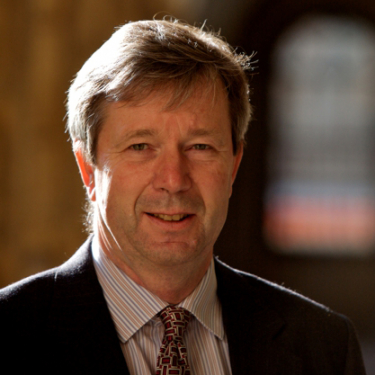I was the Provost of the College from 2008 until 2019.
Earlier in my career, I had been one of the two Chemistry Fellows from 1984 until 2004. During my Provostship the College completed a number of substantial building projects on the Main Site, made a number of excellent appointments to the Fellowship, greatly strengthened its relationships with Old Members, and recovered well from the effects of the financial crisis of 2008. Whilst Provost I had two spells as the Deputy Chair of the Conference of Colleges, and then took over as Chair, during a period in which the Conference developed substantially. The Conference is the body which attempts to keep the colleges acting in concert and responds on behalf of the collegiate side of the University to formulate policies in response to external and internal challenges. As a consequence of these roles, I was on the University Council for six years and became a pro-vice-Chancellor of the University.
The 1984-2004 period marks the mid-career time during which I really consolidated my scientific research, whilst also attending to the physical chemistry tutorials in the College. I began to develop several computational methods to enable the study of the atomistic structure and dynamics of materials at a realistic level. Some of these strands were quite successful and have resulted in programs which are in use around the world – especially to study and predict the physical properties of ionic materials. These studies took me into several topical application areas including the application of ionic melts in new nuclear technologies, batteries and supercapacitors. I left Oxford in 2004 to take up the Chair of Chemistry at Edinburgh University where I subsequently became the Director of the Centre for Science at Extreme Conditions. My research career continued in the first couple of years as Provost but was subsequently overtaken by other calls on my time.
I attended St Bede’s School in Bradford and did my first degree and DPhil at the University of Sussex, with a highly formative 18-month period at UCLA in between. In 1974 I was fortunate to be offered an academic position at the University of Cambridge before I had finished my doctorate (those were the days!) and remained there, and as a Fellow of Magdalene College, until 1982 when the squeeze on university positions meant that I needed to move on. I went to the Royals Signals and Radar Establishment at Malvern, then the major centre for the development of liquid crystal displays, before the opportunity of the position at Oxford and Queen’s came up through the relaxation of the squeeze on universities.
I am grateful to have retired when I did, before COVID and the attendant crises came along. Amongst other things, I remain a Governor at two schools, and I chair the Evaluation Panel of the Royal Society.
